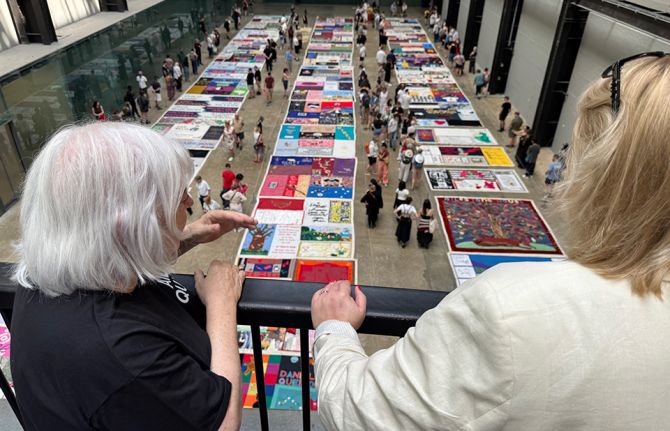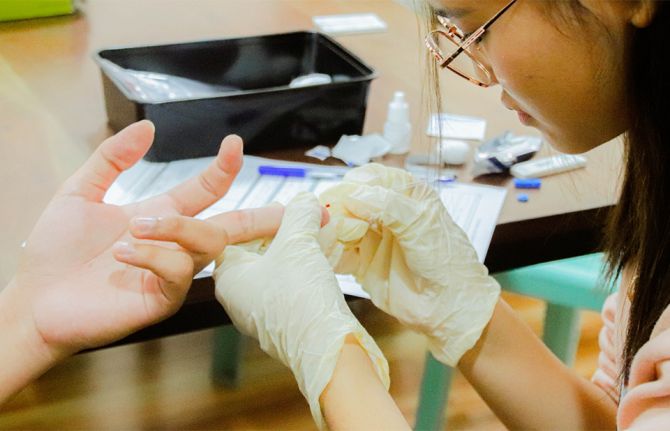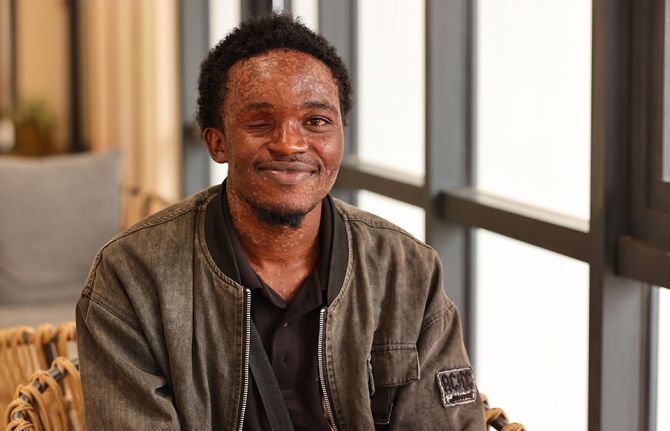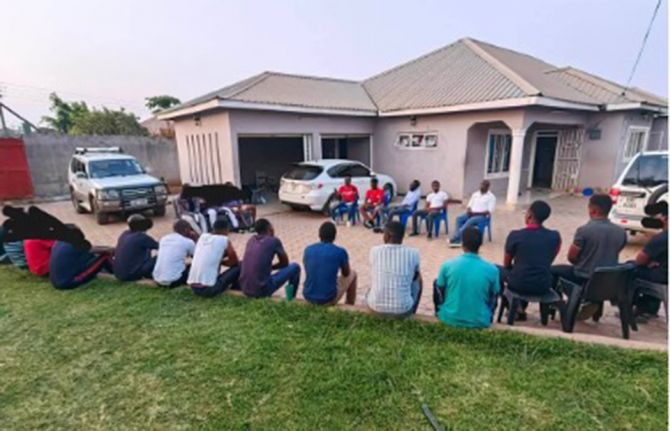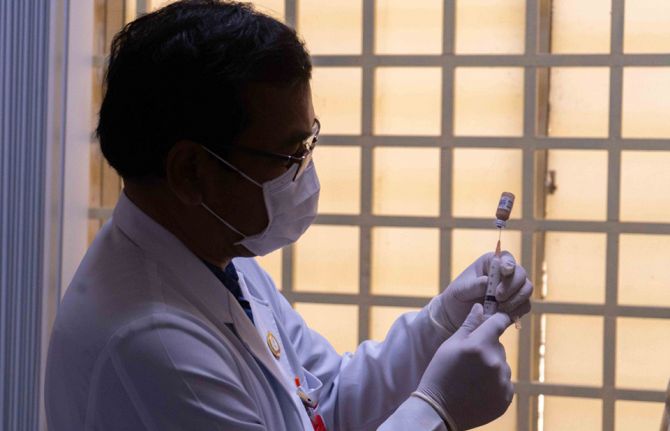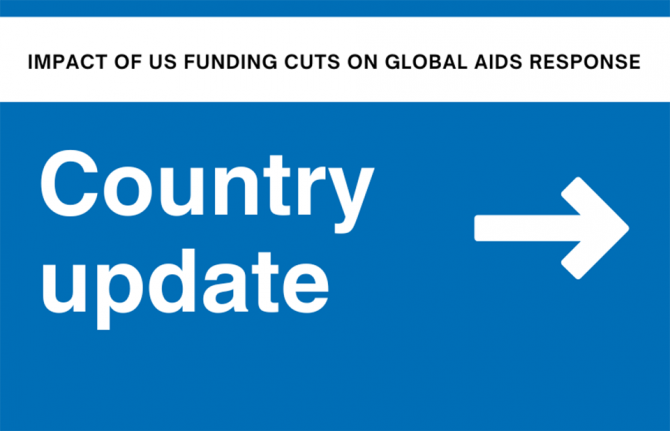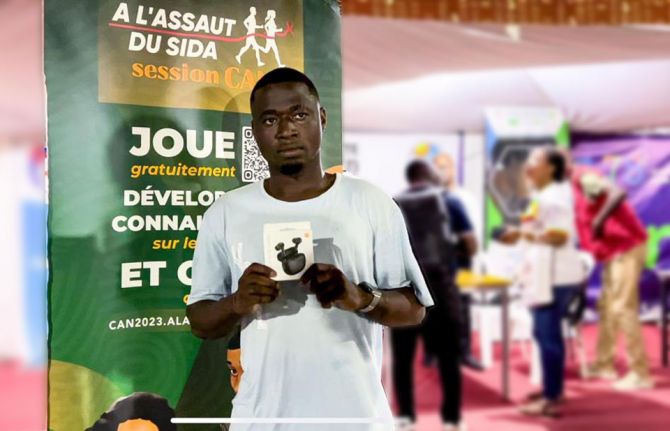
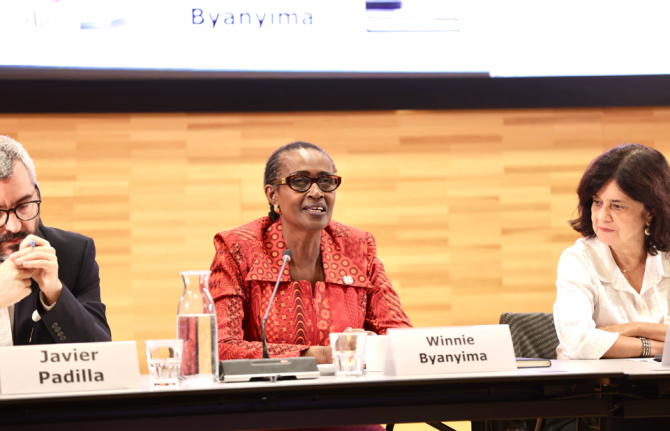

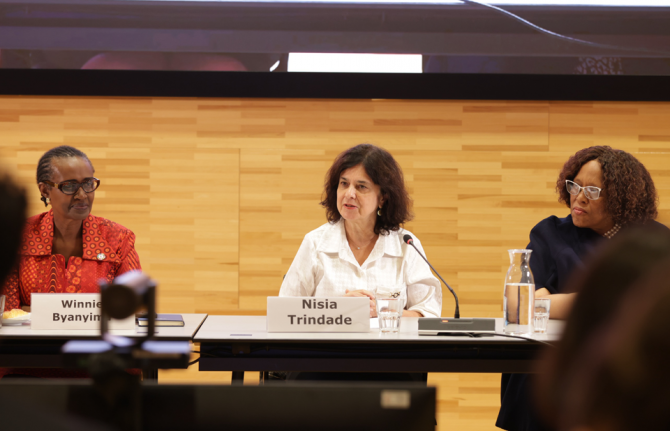

Feature Story
Global health leaders: Pandemic Agreement can help fight inequalities and AIDS
22 May 2025
22 May 2025 22 May 2025Global health leaders called for the Pandemic Agreement adopted at the 78th World Health Assembly to deliver where past efforts failed—equitable access to life-saving technologies and services during times of crisis.
The call took place during an event organized by the UNAIDS’ convened Global Council on Inequality, AIDS and Pandemics featuring senior South African diplomat, Precious Matsoso, Co-Chair of the Intergovernmental Negotiating Body for the Pandemic Agreement, UNAIDS Executive Director Winnie Byanyima, former Health Minister of Brazil Nísia Trindade, and Spain’s Health Secretary Javier Padilla Bernáldez.
The panel reflected on decades of experience from the global HIV response, how its lessons were not learned during the rollout of COVID-19 vaccines, and what needs to change before the next global pandemic crisis.
“This agreement makes it clear that a principle of pandemic response will be sharing what has been paid for publicly. This is so important for us,” Ms Byanyima told participants. “Twelve million people in Africa died waiting for HIV antiretrovirals; they say that 1.3 million lives could have been saved during COVID-19 had the vaccines been shared equitably. This agreement has laid a foundation for building on that experience and ensuring that never again will millions around the world be dying when a life-saving technology is there.”
Precious Matsoso, a former Director-General of South Africa’s National Department of Health, said that the Pandemic Agreement is “not the end in itself, but the beginning of a process” in addressing inequalities in pandemic preparedness and response, and that even while countries are ratifying the agreement, they can act on its principles and provisions.
“You don't have to wait to ensure that there is personal protective equipment for your health workforce, you don't have to wait to start strengthening your health system,” she said. “If you want products to be approved, if you want research and development to happen, if you want diversified local protection ... you don't have to wait. You can start having those measures put in place in different countries.”
Former Minister Trindade stated that, in September 2021, 76% of the world’s COVID-19 vaccine supply was concentrated in only 10% of the world’s countries. Brazil and the G20 have launched a Global Coalition on Local and Regional Production, Innovation and Equitable Access that aims to strengthen the capacities of countries to develop and manufacture health technologies for neglected disease, like Dengue, and diseases that impact vulnerable populations, like HIV.
“As technology and the scientific basis of [disease control] have advanced, at the same time, inequalities [in access] have enlarged,” Trindade said. “Diseases that were not seen as neglected became neglected, because it's not a problem of the disease, it's a problem of power, economic interest and so on.”
Ms Byanyima noted that innovative technologies for the AIDS response, such as long-acting injectable antiretroviral medicines for HIV prevention and treatment, have been slow to rollout, and global targets for pre-exposure prophylaxis, known as PrEP, will not be reached.
A promising long-acting antiretroviral from Gilead Sciences, lenacapavir, requires only two injections per year to prevent HIV infection. Gilead has signed agreements with six companies to make and sell generic lenacapavir. UNAIDS has called for more manufacturers in the Global South, and especially sub-Saharan Africa, to be granted licences, and for the generic version to be sold in more countries in order to accelerate access.
“There is this amazing technology that Gilead has invented,” Ms Byanyima said, “However, it's not yet available. And it could take years and years to become available. This is not a way to fight and win against a pandemic.”
Secretary Padilla Bernáldez said that the technology transfer provisions in the Pandemic Agreement could help accelerate access. “The pandemic agreement is going to be the framework that we are going to use when talking about lenecapavir,” Mr Padilla said. “These words on technology transfer [in the Pandemic Agreement] are maybe not the ideal that we would have chosen, but for sure, they are going to make us able to go further.”
Moderator Matthew Kavanagh, Director of Georgetown University’s Center for Global Health Policy & Politics, called on countries to make the most of the opportunities created by the historic agreement. “The Pandemic Agreement is not everything we would want, but it is the beginning of a powerful movement ... a sign that global health, despite reports of its death, is far from dead,” he said. “We can keep pushing towards something that is equitable, powerful, and improves people's health.”
Watch the full event:

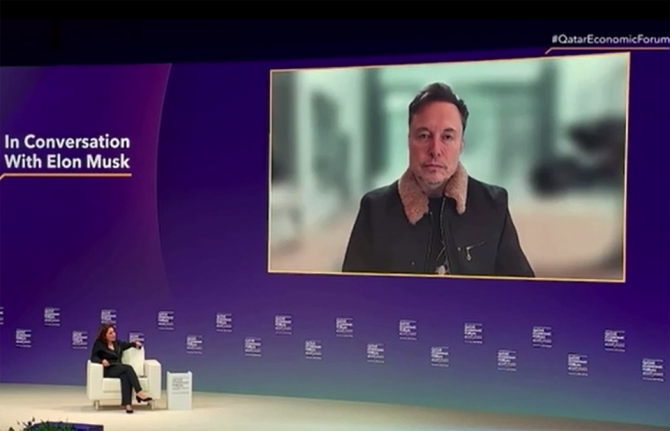
Press Release
UNAIDS encouraged by comments from Elon Musk that he will fix the US funding crisis for HIV services
21 May 2025 21 May 2025Mr Musk made the remarks during an interview with Bloomberg’s Mishal Husain at the Qatar Economic Forum on 20 May
GENEVA, 21 May 2025—UNAIDS is deeply encouraged by the statement from Elon Musk that he will fix the current crisis related to a lack of US Government funding for lifesaving HIV services. UNAIDS is tracking daily the impacts of US funding cuts on HIV services for people living with and affected by HIV around the world as the data and stories of impact on UNAIDS website show.
Currently, many HIV prevention programs supported by the US President's Emergency Plan for AIDS Relief (PEPFAR) have been stalled. The Administration issued a limited waiver providing for continuity of some services, including comprehensive HIV testing and treatment, but it is not being fully implemented within countries, and the waiver excludes almost all HIV prevention services except those for pregnant and breastfeeding women.
For detailed, specific examples of the impact of US funding cuts in dozens of countries see here: Impact of US funding cuts on the global HIV response | UNAIDS
UNAIDS estimates indicate that the permanent discontinuation of HIV prevention and treatment programmes currently supported by PEPFAR would, between 2025 and 2029, lead to:
- An additional 6.6 million new HIV Infections.
- Around 2300 additional new HIV infections per day.
- An additional 4.2 million AIDS-related deaths.
- Over 600 additional AIDS-related deaths per day.
Estimating the potential impact of HIV response disruptions
We can end the AIDS pandemic, but we cannot do so without continued partnership and leadership by the US on HIV prevention efforts for those most in need. Latest estimates show that 1.3 million people were newly infected with HIV in 2023; many were among the most marginalized and vulnerable groups, including young women and girls. Every week some 4000 young women and girls became infected in 2023.
Some countries relied on PEPFAR for over 95% of their funding for HIV and while UNAIDS has been supporting countries' transition to self-reliant nationally funded responses, this transition must be done methodically to ensure no more lives are lost during this process.
UNAIDS has also been impacted by US funding cuts; given the critical roles UNAIDS is playing to build a sustainable future for the AIDS response, the cuts undermine continued progress to end AIDS and transition to sustainability nationally owned and financed HIV responses.
UNAIDS is encouraged by Mr Musk’s remarks and urges the US to continue their leading role in ending AIDS by restoring HIV prevention and treatment funding to countries most affected by HIV. UNAIDS stands ready to work hand in hand with the US to help support sustainable transitions in the coming months and into the future.
Watch original interview:
UNAIDS
The Joint United Nations Programme on HIV/AIDS (UNAIDS) leads and inspires the world to achieve its shared vision of zero new HIV infections, zero discrimination and zero AIDS-related deaths. UNAIDS unites the efforts of 11 UN organizations—UNHCR, UNICEF, WFP, UNDP, UNFPA, UNODC, UN Women, ILO, UNESCO, WHO and the World Bank—and works closely with global and national partners towards ending the AIDS epidemic by 2030 as part of the Sustainable Development Goals. Learn more at unaids.org and connect with us on Facebook, Twitter, Instagram and YouTube.

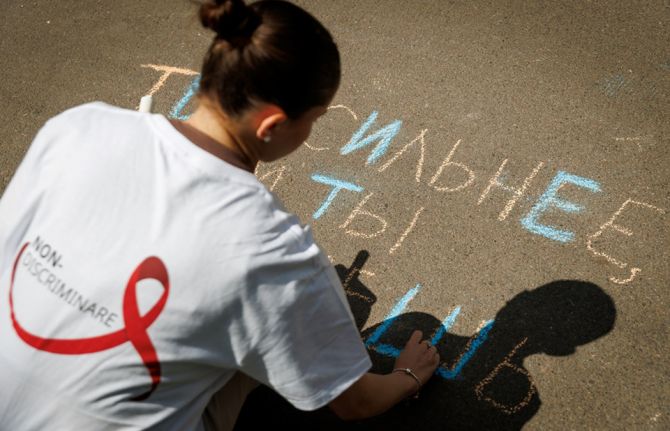
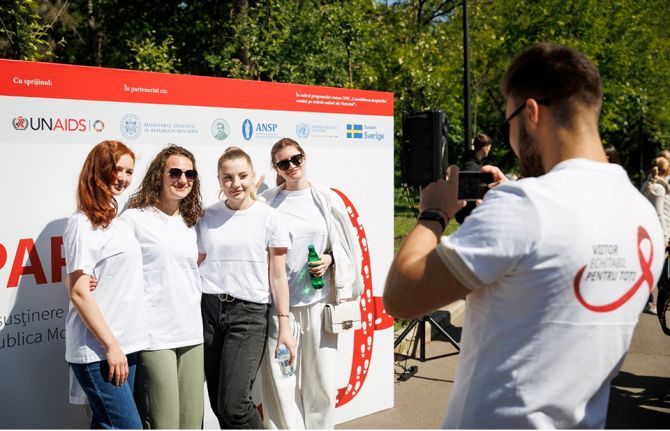
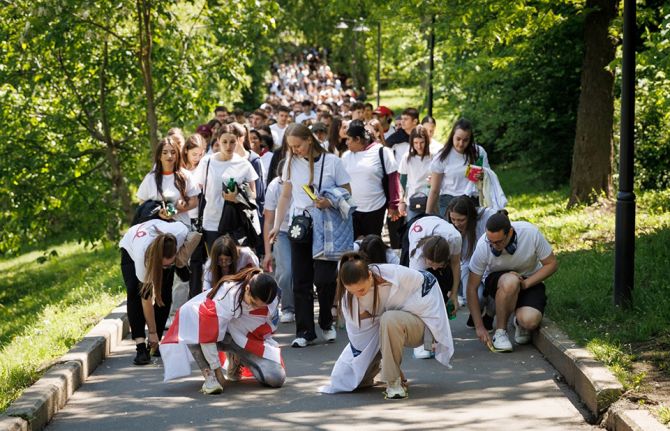
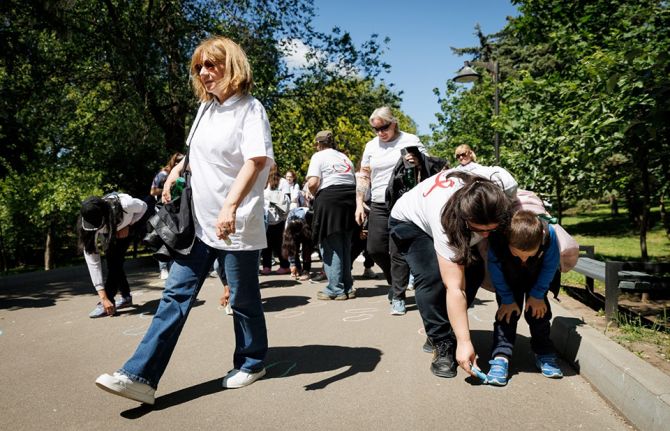
Feature Story
Towards stigma-free healthcare for people living with HIV in Moldova
23 May 2025
23 May 2025 23 May 2025In the heart of Chișinău, Moldova, medical students, healthcare workers, civil society members, and representatives of the international community took a symbolic step toward a more inclusive, respectful, and stigma-free health system.
To commemorate International AIDS Candlelight Memorial Day and under the theme of “In Their Shoes”, the event was organized by UNAIDS in partnership with the Association of Medical Students and Residents, the Nicolae Testemițanu State University of Medicine and Pharmacy and the Ministry of Health of the Republic of Moldova. The event marked a growing movement to end HIV-related stigma in Moldova’s healthcare system—a transformation already underway in medical education.
Since 2023, the Nicolae Testemițanu State University of Medicine and Pharmacy, with technical support from UNAIDS and financial backing from the Embassy of Sweden, has introduced Human Rights in Healthcare as a compulsory course across all faculties. Rather than remaining a stand-alone subject, human rights principles are now embedded in core clinical disciplines such as surgery, gynecology, oncology, infectious diseases, and family medicine, including training on how to treat people living with HIV and members of key populations.
“Patients today are more informed. They understand their rights,” said Dr Virginia Salaru,
vice-director of the Didactic and Academic Quality Management Department and Associate Professor. “And medical professionals must be ready, not just scientifically, but ethically.”
This reform is timely. Despite progress in HIV prevention and treatment, stigma in healthcare remains a major barrier. According to the Stigma Index 2.0, people living with HIV, especially those from key populations such as people who use drugs, sex workers, men who have sex with men, and transgender people, continue to face breaches of confidentiality, avoidance by medical staff, and discriminatory treatment.
“Despite all our achievements today, despite having antiretroviral therapy, knowledge, and experience, I still hear stories of despair, rejection, and stigma every day. Sadly, people are still dying, not from the virus, but from attitudes and indifference,” said activist Irina Goreaceaia.
“As the authority responsible for public health, we want every person living with HIV to have equal access to diagnosis, treatment, and support,” said Angela Paraschiv, Secretary of State, Ministry of Health. “HIV does not have to be a social condemnation. The health system offers the support people need to live normal lives — with dignity, not isolation.”
In partnership with UNAIDS, the university conducted a curriculum review through a human rights lens. It identified critical gaps including the fact that, while ethics were taught in theory, students were not being prepared to navigate real-world complexities such as stigma, patient diversity, and discrimination. The updated curriculum now trains students in assertive communication, confidentiality, and patient autonomy regardless of HIV status, gender identity, or background.
“Healthcare should be a place of healing, not harm,” said Svetlana Plamadeala, UNAIDS Country Director for Moldova. “Stigma has no place in clinics, hospitals, or maternity wards. Every person living with HIV deserves privacy, respect, and access to care.”
This effort is part of the broader United Nations programme which includes training more than 250 healthcare workers in rights-based approaches and stigma reduction. Called “Strengthening Human Rights on Both Banks of the Nistru River,” the programme consists of a series of student-led initiatives, public awareness campaigns, and community engagement to reinforce these lessons across Moldova’s campuses and clinics.
Early results are promising. Anonymous student evaluations show high satisfaction with the human rights curriculum, and practical implementation has already started across disciplines.
“In addition to the Human Rights course, the campaigns, flash mobs, and student-led initiatives really opened our eyes,” said Cătălina Repesciuc, a second-year student at the university. “Understanding stigma, especially around HIV, is essential not just in theory, but for how we interact with real patients in everyday practice.”
Katarina Fried, Ambassador of Sweden to Moldova, emphasized that “this initiative combines solidarity, education, and human rights. Our project with the UN reinforces these values on both sides of the Nistru River. The active involvement of students and health authorities shows what social responsibility looks like in action.”
Moldova’s message is clear: healthcare must be grounded in respect, dignity, and rights. And thanks to support from UNAIDS and Sweden, that transformation is already underway — in the classroom, in clinics, and in the minds of the next generation of healthcare professionals.
“You wear a white coat for only a few hours a day, the rest of the time, you are a patient like anyone else,” said Dr Cocieru-Salaru. “Treat your patients the same way you want to be treated. Always ‘walk in their shoes’,” she added.
Region/country

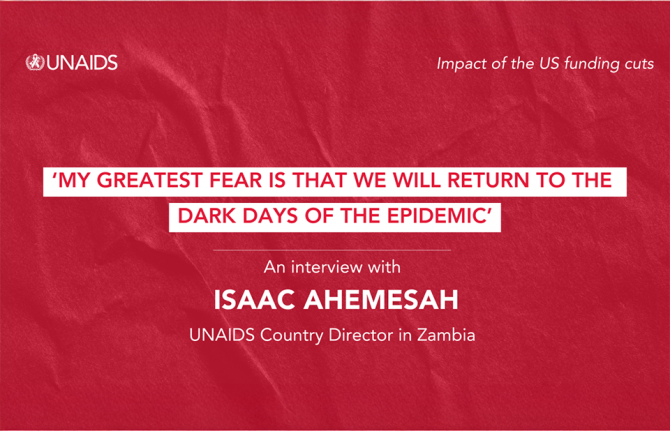
Feature Story
‘My greatest fear is that we will return to the dark days of the epidemic’
21 May 2025
21 May 2025 21 May 2025UNAIDS Country Director reports on the impact of funding cuts to the HIV response
The HIV response in Zambia, known as a model of success in sub-Saharan Africa, is now facing major challenges following the abrupt and significant cuts to US funding. It has led to widespread disruption: clinics have closed, prevention services have been scaled back, and thousands have lost access to lifesaving medication. Yet the Zambian government and partners are stepping in to protect the progress made.
In this interview, UNAIDS Country Director for Zambia, Isaac Ahemesah, details the fallout from these funding decisions on health services, vulnerable communities, and the country’s ability to sustain progress against HIV-and outlines what is urgently needed to avert further health crisis.
“In 1997, life expectancy in Zambia was about 46 years due to HIV and AIDS. In 2023, it was nearly 66 years because of the investments made and the strong partnership.”
Q: How have the US funding cuts impacted the HIV response in Zambia?
Zambia has long relied on international aid, including substantial support from PEPFAR. Three years ago, the US government’s commitment stood at approximately US$ 402 million, which was subsequently reduced to US$ 392 million, and most recently to US$ 367 million. Despite these reductions, the contribution remains significant, not only to the HIV response, but to Zambia’s overall health sector. To put it in perspective, of the US$ 600 million in total US support to Zambia for development last year, US$ 367 million, around 60%, was allocated to HIV.
However, the abrupt funding cuts led to the termination of key programmes. More than 11 000 health workers supporting the HIV response, and approximately 23 000 health workers providing services for malaria, tuberculosis, and other health needs, were impacted.
Several essential initiatives were stopped. These include the closure of 32 wellness centres that served over 20 000 key populations, including LGBTQ+ people, sex workers, and people who inject drugs, across seven of Zambia’s ten provinces. These centres offered critical services such as HIV testing, treatment, and support.
All DREAMS programmes, which supported adolescent girls and young women in 22 districts, have also been shut down. This has cut off access to HIV prevention, life skills, and economic empowerment activities for thousands of vulnerable girls.
HIV prevention services have also been disrupted. Sixteen standalone centres providing voluntary medical male circumcision - a proven HIV prevention method - have ceased operations. Nearly half of Zambia’s pre-exposure prophylaxis (PrEP) services, which help prevent HIV infection, were funded by the US and have now been discontinued.
Community-led monitoring programmes, which ensured quality and accountability in HIV care, have also been terminated. Furthermore, the Smart Health electronic medical records system, along with platforms used for forecasting and quantifying medical supplies, is no longer operational, making it increasingly difficult to manage patient care and maintain drug inventories.
Q: What will happen if the DREAMS programme is not reinstated?
Currently, Zambia records approximately 23 000 new HIV infections annually, with about 8700 occurring among young people aged 15 to 24. Notably, 60% of infections in this age group happen among girls.Without support for prevention and treatment interventions, new HIV infections could surge to 180 000 per year by 2030. Among young people, infections could rise to over 60 000 annually by 2030.
Gender-Based Violence (GBV) remains a growing concern in Zambia, and each GBV case carries a heightened risk of HIV transmission. Addressing this requires a coordinated, multi-sectoral approach that extends beyond HIV alone to include family planning and reproductive health services. National partners are working to reinvigorate this multi-sectoral response so that all relevant sectors-education, gender, internal affairs, and others-actively share responsibility for the HIV response.
Given the challenges, there is a pressing need to pursue local initiatives and mobilize alternative funding sources to support adolescent girls and young women, safeguarding their health and rights.
Q: Are there concerns about supplies of HIV medicines?
Yes, there is significant concern. At present, Zambia has sufficient antiretroviral (ARV) medication to last until the end of the year. However, the US has announced an additional US$50 million cut in funding for medicines and health commodities, effective from next year, due to concerns about drug theft. This will make it extremely difficult to ensure an uninterrupted supply of ARVs, particularly for the most vulnerable populations. There have already been reports of people living with HIV receiving reduced quantities of medication - less than the standard three- to six-month supply - due to ongoing uncertainty and challenges in stock management.
Q: What is UNAIDS doing to support Zambia during this crisis?
At the onset of the US funding freeze, UNAIDS immediately partnered with the Ministry of Health to convene national leadership and all key stakeholders. This was critical to coordinate a unified and effective response to the sudden disruption. We quickly led an impact assessment to understand how the freeze was affecting Zambia’s HIV response on the ground. This provided the data needed to guide urgent decisions.
One of our first steps was to work with the government and partners, we helped define a minimum package of essential HIV services that could realistically be maintained with the reduced resources available. We costed this package at about US$ 147 million and presented it to the Cabinet and Presidency for consideration in the national budget.
At the same time, we supported the development of the HIV Sustainability Roadmap, which explores alternative domestic financing options. This includes innovative approaches such as leveraging health insurance schemes and introducing total market strategies-for example, making PrEP and vaginal rings available through pharmacies.
We also worked closely with the Ministry of Health to revise policies to better fit the current context. For example, we supported allowing longer antiretroviral therapy refills—for up to six months–—to reduce the burden on both patients and the health system. We also helped adjust HIV testing protocols to manage limited supplies more effectively and piloted new service delivery models outside traditional health facilities to expand access.
At the operational level, we partnered with WHO, UNICEF, UNFPA, and others to monitor weekly stock levels of HIV commodities, ensuring timely responses to shortages. We support civil society organizations, especially those representing key populations, in transitioning clients from closed wellness centers to public health facilities, helping maintain continuity of care.
To address broader systemic challenges, UNAIDS contributed to the restructuring plan for the Zambia Medicines and Medical Supplies Agency to improve accountability and strengthen the supply chain.
Our Resource Allocation Forecasting Tool was used to estimate the real cost of sustaining Zambia’s HIV response, which we estimated at around US$ 150 million annually. This tool helps the government and partners plan budgets more effectively.
UNAIDS acts as the central hub for information-sharing and advocacy around the impact of US funding cuts. We regularly present needs assessments to the UN Country Team and support ongoing fundraising discussions to urgently mobilize resources to sustain services.
Finally, we have supported training for health workers to promote respectful, non-discriminatory care for key populations now accessing mainstream health services. This is vital to ensure no one is left behind despite the challenges.
Q: What is the solution to ensure sustainable financing for Zambia’s HIV response, and avoid such a crisis in the future?
The key to sustainable financing lies in increasing domestic funding and reducing reliance on external donors. While the recent US funding cuts were abrupt and challenging, this situation was not entirely unexpected. For years, Zambia and other countries have been encouraged to take greater ownership of their HIV responses. The real surprise was the speed and scale of the funding reductions.
To protect its HIV response, Zambia must now mobilize domestic resources. This includes engaging local philanthropic organizations, expanding the role of national health insurance schemes, and ensuring that HIV services are fully integrated within these systems. Innovative models like risk pooling and market-based access to prevention tools, such as making PrEP and vaginal rings available through pharmacies, will also be key to expanding reach and ensuring continuity.
On the global level, the HIV response must increasingly pivot toward long-acting treatment and prevention options, such as injectable PrEP and antiretroviral treatment. These innovations can help simplify adherence and improve outcomes.
Zambia is also exploring total market approaches, where the private sector helps supply prevention and treatment services. In addition, local production of ARVs could help reduce costs and improve supply chain stability.
Critically, the country has already shown that essential HIV services can be maintained on smaller budgets, provided resources are used efficiently. But for long-term sustainability, the government must take the lead. This means prioritizing HIV in the national budget and exploring innovative domestic revenue sources, such as earmarked taxes on alcohol, tobacco, or health products.
While international partners will remain important, the responsibility for a predictable, sustainable HIV response now rests squarely with Zambia itself—to protect the lives and health of its 1.4 million citizens living with HIV, and to ensure that no one is left behind.
Q: What’s your message to the international community?
Today, I believe the global HIV response stands at a crossroads. The decisions we make now will either help the world achieve Sustainable Development Goal 3.3—the target of ending AIDS as a public health threat by 2030—or risk a devastating reversal.
If we ease up, we could see a return to the 1990s, when new HIV infections spiraled out of control, HIV-related deaths surged, and the global economy suffered greatly.
All we ask for is a final push— a sustained commitment to support countries in fulfilling their promises to end AIDS as a public health threat. I urge the US government and all other donors to reconsider the recent funding cuts. We need to keep our foot firmly on the accelerator until we reach the finish line.
Otherwise, my greatest fear is that we will return to the dark days of the epidemic, with significant increases in new infections and deaths.
The Joint United Nations Programme on HIV/AIDS (UNAIDS) leads the global effort to end AIDS as a public health threat by 2030 as part of the Sustainable Development Goals.
Following the US funding cuts in January, UNAIDS is working closely with governments and partners in affected countries to ensure that all people living with or affected by HIV continue to access life-saving services. For the latest updates, please visit unaids.org
Related resources
Watch: Integration of HIV services key
Watch: Final push needed
Region/country

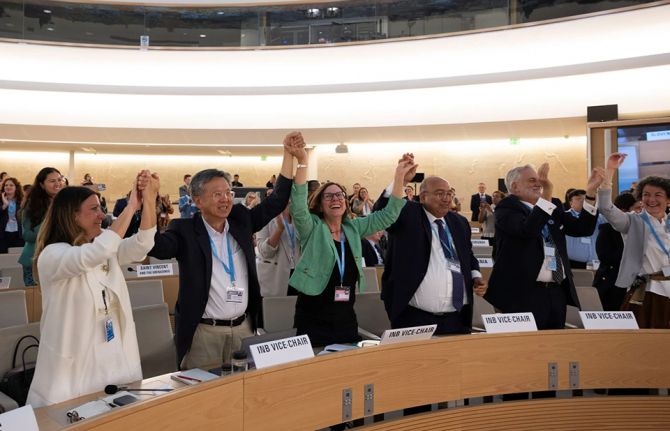
Press Release
UNAIDS welcomes WHO Pandemic Agreement
20 May 2025 20 May 2025Governments at the 78th annual World Health Assembly have adopted a global Pandemic Agreement. The Joint United Nations Programme on HIV/AIDS (UNAIDS) and other stakeholders played an important role in supporting the process by advocating for an agreement that centres equity and human rights.
Responding to the news, Winnie Byanyima, Executive Director of UNAIDS, said:
“Amid the devastating crisis in global health funding, this truly global agreement offers a ray of hope. It is an affirmation that multilateralism remains possible, and indeed the only way to fight the viruses that exploit global divisions but refuse to respect borders.
I congratulate South Africa and France as Co-Chairs; Australia, Brazil, Egypt and Thailand as Vice-Chairs—each representing their region—and WHO Director-General Dr Tedros for this landmark achievement.
The text is a commitment that global equitable access will be a guiding principle in pandemic preparedness, prevention and response. Crucially, governments will attach conditions to public funding—which means that, when a pharmaceutical company takes public money, it should come with clear conditions requiring equitable access. And it makes technology transfer a priority.
While the Agreement is a product of compromise—and governments should treat it as a floor, not a ceiling—still, it gives humanity some of the tools needed to ensure the next pandemic does not repeat the horrific inequity of HIV and COVID-19. It is our chance to break the pandemic-inequality cycle—and governments should be bold and swift in their implementation.”
Ms Byanyima will discuss the implications of the Pandemic Agreement on the sidelines of the World Health Assembly at an event organized by the Global Council on Inequality, AIDS and Pandemics on Wednesday 21 May, 08:30 – 10:00 CET. Find out more about UNAIDS’s engagements at #WHA78 here.
UNAIDS
The Joint United Nations Programme on HIV/AIDS (UNAIDS) leads and inspires the world to achieve its shared vision of zero new HIV infections, zero discrimination and zero AIDS-related deaths. UNAIDS unites the efforts of 11 UN organizations—UNHCR, UNICEF, WFP, UNDP, UNFPA, UNODC, UN Women, ILO, UNESCO, WHO and the World Bank—and works closely with global and national partners towards ending the AIDS epidemic by 2030 as part of the Sustainable Development Goals. Learn more at unaids.org and connect with us on Facebook, Twitter, Instagram and YouTube.
Related resources



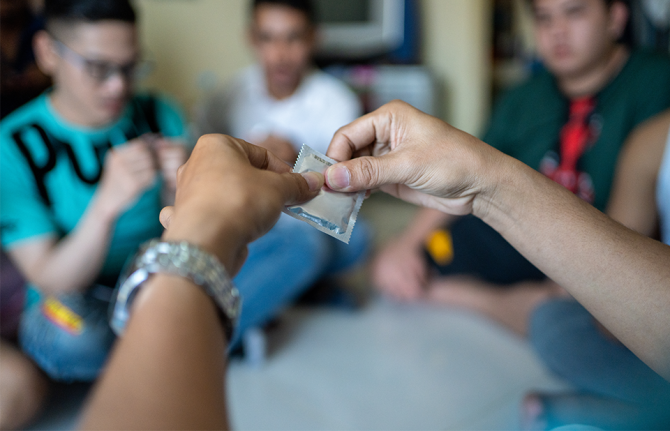
Feature Story
HIV is increasing among men who have sex with men in Cambodia; One organization is trying to turn the tide
21 May 2025
21 May 2025 21 May 2025Chhum Vy, an outreach worker for Men’s Health Cambodia (MHC), lives in Steung Meanchey, a low-income neighborhood in southern Phnom Penh. She has converted her rental house into a makeshift community centre for gay and transgender people who live in the area. To get there you pass through a Buddhist temple compound, then head down narrow streets, just wide enough for a motorbike.
Ms Vy has taped health promotion posters to the walls and arranges HIV testing and prevention tools in a corner of her living room floor. Clients leave their shoes at the door and sit in a circle on the ground for her sensitization sessions.
“I work every day, seven days a week, sometimes in the evening depending on the needs of the client,” she said.
She is on the frontlines, tackling the toughest challenge facing Cambodia’s HIV response. While new infections in the southeast Asian nation are declining among all other groups, they are increasing among gay men and other men who have sex with men. The reasons for this are complicated.
Ron Sopheab said he has lost many gay friends to AIDS. In the early 2000s one of his friends committed suicide when his family kicked him out of the house, refused to even eat with him and allowed him just a small bed outside.
The MHC workers and clients agree that stigma and discrimination against both men who have sex with men and people living with HIV have declined since those days.
“A little remains, but it is at a lower level,” Mr Sopheab said.
However, he noted that gaps in Cambodia’s progressive HIV response can still leave people susceptible to stigma and discrimination. Despite practicing safer sex in his regular life, Mr Sopheab contracted HIV during three months in a detention center where there was no access to HIV prevention tools. MHC provides him with peer support to remain adherent to treatment and gives him transportation support to attend the clinic when needed.
For Pom Rotha, it is extreme poverty that makes her vulnerable. As she is currently living in a rental room and sometimes cannot afford to pay the room fee, she is unable to renew her national identification. That means she cannot access the social support services that are a lifeline for many Cambodians. She survives through sex work and says about 5% of her clients insist on not using condoms.
“I cannot say ‘no’ because I need the money,” she said. “I try to negotiate, but if it does not work… I let it be.”
MHC provides Ms Rotha with pre-exposure prophylaxis, a preventive medicine known as PrEP, to help her avoid HIV infection if she is exposed. She said this is how she has remained HIV-free despite the risks she’s felt forced to take.
But another danger is far more pervasive. Young gay men are using the internet to find sexual partners either on hookup sites or social media. Many of them do not have the information or support they need to protect themselves.
That is why MHC has developed a digital strategy. This approach complements the physical testing, counselling and peer services it offers in ten provinces. Bun Pheng manages the online content and is himself an influencer. His team develops social media materials and campaigns about HIV prevention and MHC services. Every week they host a Facebook Live featuring experts or celebrity guests. A separate team is responsible for reaching out to clients through the gay social networking apps Grindr and Blued. Part of Mr Pheng’s job is to monitor the online comments, answering questions and interacting with the audience.
“If someone needs services, I refer them to an outreach worker to make an appointment where it’s most convenient,” he said.
Clients are offered a range of options to meet them where they are.
They can come in for testing or be mailed a self-test kit (one option tests at the same time for syphilis). MHC provides counselling before forwarding the testing kits and takes those with reactive results to the lab for confirmation. This varied approach is meant to help reach the 8% of people living with HIV in Cambodia who are not yet aware of their HIV status.
Ms Vy shows off a range of HIV prevention options. She demonstrates correct condom and lubricant use. Then she explains the basics of PrEP.
The Khmer HIV/AIDS NGO Alliance (KHANA) sends a mobile van out every night to provide education and testing in hotspot areas where gay men and transgender people go to find partners.
UNAIDS Country Director to Cambodia, Lao PDR and Malaysia, Patricia Ongpin, said more investments are needed for these community-led approaches tailored for men who have sex with men.
“Communities are responding to the realities of people’s lives in a way that state services can’t,” Ms Ongpin said. “To end AIDS we must channel resources to the organizations with the best chance of reaching those who are now being left behind.”
At the end of Ms Vy’s Sunday evening session clients leave with a bow and a handful of condoms.
“Self-stigma is really high,” Ms Vy reflected. “Societal stigma has reduced a lot, but some people still don’t want to access the services. I even had one case where after counselling a person still decided to stay away from services until she died. That is what we are working to address.”
Region/country

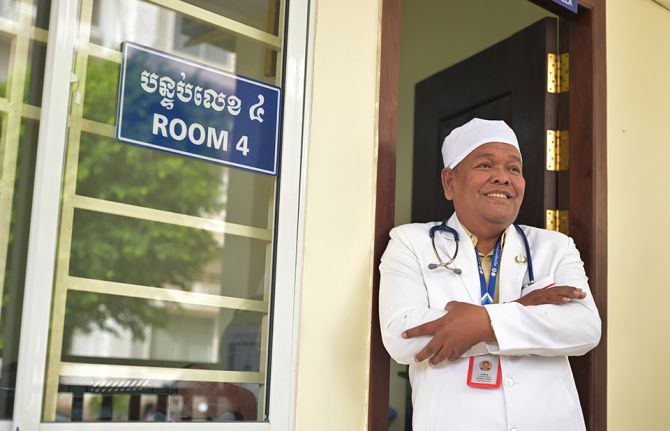
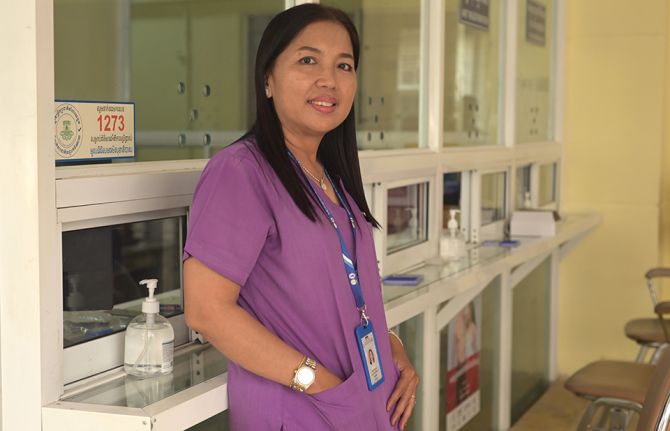
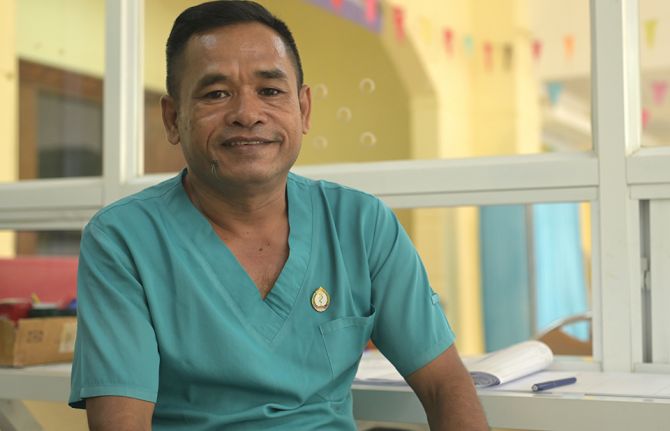
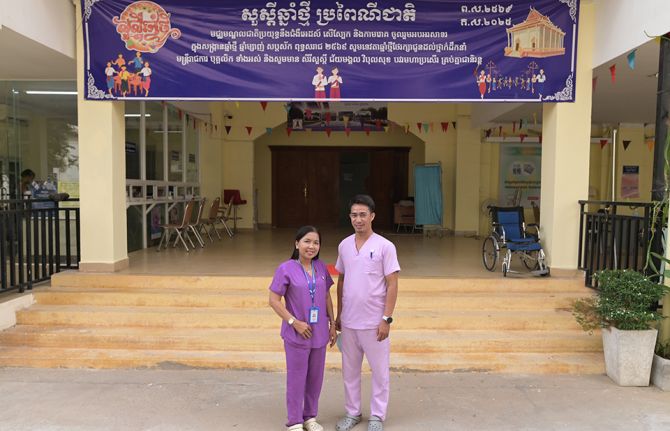
Feature Story
Client-centered services speed up Cambodia’s progress to end AIDS
20 May 2025
20 May 2025 20 May 2025Arun Seang* works six days a week in a garment factory in Phnom Penh. In the past when he needed time off to go to the HIV clinic he came up with excuses. Now there’s no need. The National Clinic for AIDS, Dermatology and STDs (NCHADS) is open every day, including weekends.
The scheduling suggestion came from a community-led monitoring exercise and community feedback. It was initially implemented as part of an Australia-supported project managed by UNAIDS. When the experiment ended, the clinic maintained a seven-day week due to its popularity.
This is one of several approaches taken to make HIV prevention and treatment services in Cambodia more user-friendly. “The staff are really nice,” Mr Seang said following his Sunday afternoon treatment consultation. “They are welcoming and also, they maintain confidentiality. I feel very safe coming here.”
Integrated community support
Cultivating a sense of trust in the delivery of HIV care has been key to Cambodia’s progress toward ending AIDS. The country is one of the front-runners to reach the 95-95-95 global targets. Currently 92% of people living with HIV are aware of their status. Almost all diagnosed people are on HIV treatment and more than 98% of those on treatment have a suppressed viral load.
These results were unimaginable when Sovann Reatrey learned she was HIV-positive, 26 years ago. “In the early days it was completely different,” she said. “Before there was a lot of stigma and discrimination. Many healthcare providers gossiped about people in the clinic and kept their distance. Now there is a welcoming environment, good communication and close physical interaction.”
At NCHADS she helps achieve this. As an Antiretroviral Users Association (AUA) counsellor her work is fully integrated into the clinic’s operations rather than an add-on. Mrs Reatrey consults with patients when they are first diagnosed and throughout their treatment journey.
“It starts as a friendly discussion. I disclose my status and tell them ‘I am also living with HIV’. Some don’t believe me. They say, ‘you look very healthy, but you are like me?’ I reassure them that it’s true. This builds trust and a relationship so they can discuss their concerns openly,” she explained. “The interaction is not as client and healthcare provider, but rather as a friend and neighbour.”
Nhem Salat, another community worker, enrolls people for HIV treatment. “I smile and encourage them to raise any issues they have when they go to see the doctor,” said Mrs Salat. “It’s all about making them feel comfortable.”
One-stop services
The waiting room isn’t hemmed in by walls. Sunlight and breeze rush through. Rows of colorful flags hang from the ceiling. The space is decidedly—perhaps deliberately—open and bright.
Huge posters invoke celebrity and safety. Singer Nicky Nicky, influencers Yaro and Sinora Roath and drag queen performer Rebecca Chan promote HIV prevention and options including condoms, PrEP (medicine to prevent HIV) and self-testing.
In addition to its standard PrEP service, this month the clinic adds long-acting cabotegravir (CAB-LA), an injectable HIV prevention option that lasts for two months, and the Dapivirine Ring (DVR), a vaginal ring which slowly releases antiretroviral medicine to prevent HIV infection.
Multiple posters invite clients to get tested. Sexually transmitted infection screenings and treatments are available. Non-communicable disease services are provided. Mental health screenings are offered to everyone. Next on NCHADS’s to-do list: more work to make the service offering youth-friendly.
By design, the space is everything for everyone.
“This clinic is a one-stop shop so people can access whatever services they need. People living with HIV don’t want to move around to different places to get healthcare,” explained the clinic’s Deputy Manager, Dr Nhem Chantha.
In his examining room, Dr Chantha, explained to Mr Seang that his viral load will be checked annually. “The U=U (undetectable equals untransmittable) message has been integrated into counseling to all clients. We have a Telegram group, and we also share information on social media platforms. This makes the clients understand the benefit of having an undetectable viral load by taking their treatment so they cannot transmit HIV. Because of this, they are very happy and really adhere to the treatment.”
UNAIDS Country Director for Cambodia, Lao PDR and Malaysia, Patricia Ongpin, noted that the emphasis on community-led care and service integration ensures impact and sustainability. “Partners in government and community are working together to find solutions that get the most out of every interaction and investment,” she said. “When services are friendly and convenient, people will use them. Then we will further reduce new HIV infections and deaths.”
*(name changed to protect privacy)
Region/country

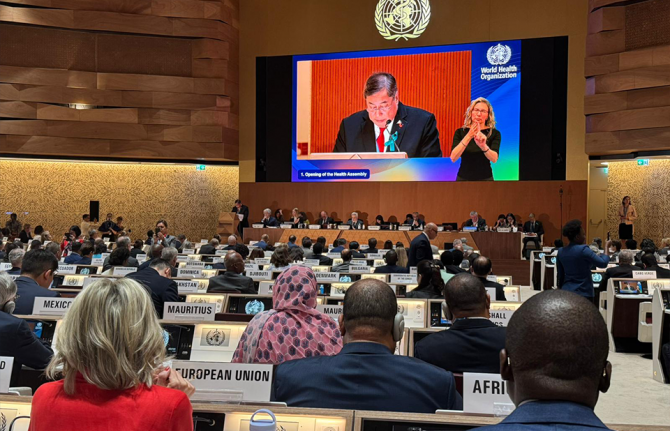
Press Release
At the 78th World Health Assembly, UNAIDS calls for urgent action to avert millions of preventable HIV Infections and AIDS-related deaths
19 May 2025 19 May 2025GENEVA, 19 May 2025— As funding cuts threaten to cause an additional 6 million new HIV infections and 4 million preventable AIDS-related deaths, UNAIDS is calling on governments and partners attending the 78th World Health Assembly (WHA) to recommit to ending AIDS by 2030.
UNAIDS estimates that an additional 2300 people are contracting HIV every day. Without immediate action to dismantle barriers to healthcare, strengthen community-led responses, and unlock sustainable financing, a catastrophic loss of life and millions more new HIV infections could reverse decades of progress.
“I remember the darkest days of AIDS – the millions of lives lost, and the existential threat to global health security. We must not go back,” said UNAIDS Executive Director Winnie Byanyima. “Amid disruption, the international community needs to come together to protect the gains made in the response to HIV and see this battle through to the end.”
A HIV prevention revolution
Long-acting injectable antiretroviral medicines such as lenacapavir – twice-yearly shots that are almost 100% effective in preventing new HIV infections – offer a chance to put the world back on track.
“We have an opportunity today of new, long-acting HIV prevention tools that could fundamentally reshape the HIV response and put us on course to end AIDS by 2030”, said Ms Byanyima. “We need a moonshot approach to mobilize a HIV prevention revolution – to scale-up these potentially revolutionary medicines and make them available and affordable to everyone who needs them.”
UNAIDS, the Global HIV Prevention Coalition, government ministers, community representatives, civil society and the pharmaceutical sector will discuss how to remove barriers to accessing lenacapavir, including pricing, intellectual property issues and regulatory hurdles at a special event on the sidelines of the WHA.
Preparing for future pandemic threats
During #WHA78, member states will adopt a Pandemic Agreement, after three years of negotiations reached a consensus last month. “UNAIDS watched in horror as the world repeated many of the mistakes of the AIDS pandemic with COVID-19. With the Pandemic Agreement, governments have a chance to say, ‘never again.’
“I congratulate South Africa and France as Co-Chairs; Australia, Brazil, Egypt and Thailand as Vice-Chairs — each representing their region — and WHO Director-General Dr Tedros Adhanom Ghebreyesus for this landmark achievement. It is proof that, even in times of crisis, multilateralism and global cooperation can deliver for humanity."
At #WHA78, UNAIDS will underline the importance of implementing the Agreement, embedding equitable, inclusive and rights-based approach, advancing access to medical innovations, centring community systems, and protecting human rights.
Communities at the heart of global health
The recent cuts in external funding for global health and development have devastated community-led organizations that deliver HIV services to people highly vulnerable to HIV. Many have had to close their doors or severely reduce their activities as international funding suddenly stopped.
UNAIDS, Coalition Plus, Frontline AIDS and UNAIDS are co-organizing an event at #WHA78, in collaboration with WHO, focusing on the urgent need to sustain and scale up community-led health systems amidst mounting global crises and shrinking international aid.
Africa’s pathway to sustainable health systems
UNAIDS has been working with governments to develop detailed transition plans towards greater domestic ownership of their HIV responses. Domestic resources already account for more than 60% of the HIV response. In the face of massive cuts to international funding, Global South leaders are stepping up and accelerating efforts, but many countries are still facing huge challenges to increase domestic HIV funding when budgets are being drained by unsustainable debt repayments.
UNAIDS will talk about the urgent need for international financial reform to enable sustainable health financing for Africa in an event co-organized with Nigeria’s Ministry of Health and Social Welfare and the Global Fund to Fight AIDS, Tuberculosis and Malaria, and other partners.
Related resources

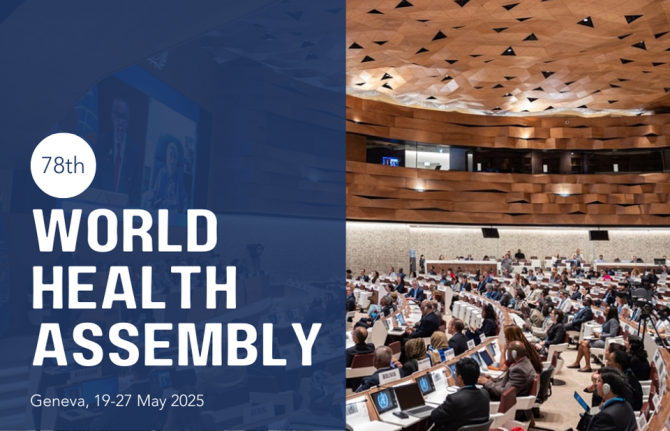
Feature Story
UNAIDS at the 78th World Health Assembly
19 May 2025
19 May 2025 19 May 2025At the 78th World Health Assembly UNAIDS is calling for urgent action to avoid millions of avoidable HIV infections and AIDS-related deaths.
As the world faces an unprecedented international funding crisis affecting global health security, UNAIDS is calling on governments and partners attending the 78th World Health Assembly (WHA) to urgently recommit to ending AIDS by 2030. UNAIDS is warning that without immediate action to dismantle barriers to healthcare, strengthen community-led responses, and unlock sustainable financing, decades of progress could be reversed and millions of lives put at risk.
The theme of the 78th World Health Assembly is One World For Health.
During the week, UNAIDS will be advocating for continued global solidarity and sustained political and financial commitment for the global HIV response as part of broader efforts to achieve the Sustainable Development Goals. This includes the need to scale up HIV services, including access to long acting injectables for HIV prevention which are almost 100% effective at preventing infections and could help countries move towards a sustainable HIV response.
UNAIDS will also be pushing for equitable, inclusive and rights-based approaches to pandemic preparedness and response, supported by lessons learned from the gains made against HIV. This means ensuring equal access to medical innovations and the centrality of community systems, data equity, access to innovations and the protection of human rights.
UNAIDS KEY EVENTS AT #WHA78
Wednesday 21 May - 08:30 – 10:00 CET
Ending inequalities in pandemic responses - The pandemic agreement and beyond
The Pandemic Agreement is a significant step forward in pandemic prevention, preparedness and response, based on the principles of equity and the full respect for the dignity, human rights and fundamental freedoms of all persons. The panel will discuss how to ensure that those principles are adhered to as the Agreement is put into practice.
Panel members:
- Precious Matsoso, Co-Chair of the Intergovernmental Negotiating Body for the Pandemic Agreement
- Nísia Trindade, former Minister of Health, Brazil
- Winnie Byanyima, UNAIDS Executive Director
Venue: Kofi Annan room - UNAIDS/WHO D Building
*WHA delegates can use their WHA accreditation badge to enter the UNAIDS building. Other attendees must register in advance here
To follow online click here
Wednesday 21 May - 18:30 – 21:00 CET
“A new era of HIV prevention; Accelerating access to long-acting prevention options through sustainable prevention systems and financing”
This High-Level Dialogue organized by the Global HIV Prevention Coalition and co-hosted by UNAIDS in collaboration with UNFPA, WHO and UNDP, the Federal Republic of Brazil and Kingdom of the Netherlands aims to galvanize political leadership, financing, and coordinated action to drive a transformational HIV prevention push. The meeting will serve as a platform for Ministers of Health, global health partners, pharmaceutical companies, and civil society to explore opportunities to expand access to new long-acting prevention technologies as a powerful addition to existing effective options.
Join UNAIDS leadership, representatives of UN partners and global health stakeholders as they discuss these issues with Ministers of Health, community representatives and leaders of pharmaceutical companies developing long-acting prevention options.
Venue: Kofi Annan room - UNAIDS/WHO D Building
Watch the livestream here
Thursday 22 May - 08:30 – 10:30 CET
The future of domestic health financing is now: Africa’s pathway for sustainable health systems
The panel discussion will explore how best to achieve financial sustainability of the health sector from different perspectives. Topics would include raising more money through innovative means, improving efficiency, strengthening planning and coordination, public-private partnerships as well as discussing the roles of different actors, including donor partners, and the institutional reforms necessary for success.
Co-organised by the Ministry of Health & Social Welfare of Nigeria, the Global Fund, WHO, UNAIDS and other partners
Venue: Ballroom AE, INTERCONTINENTAL GENEVE
Thursday 22 May - 18:30 – 20:30 CET
Communities at the heart of global health and health security: Why sustained funding for community-led health systems matters now more than ever.
Co-organised by UNAIDS, Coalition PLUS, Frontline AIDS and WHO, this event will bring together Ministers of Health, civil society leaders, donors, and global health institutions to explore sustainable solutions to safeguard and scale up community-led health systems amid global crises and decreasing aid.
Venue: Kofi Annan room - UNAIDS/WHO D Building
To attend in person, please register here
To attend online, please register here
Related resources

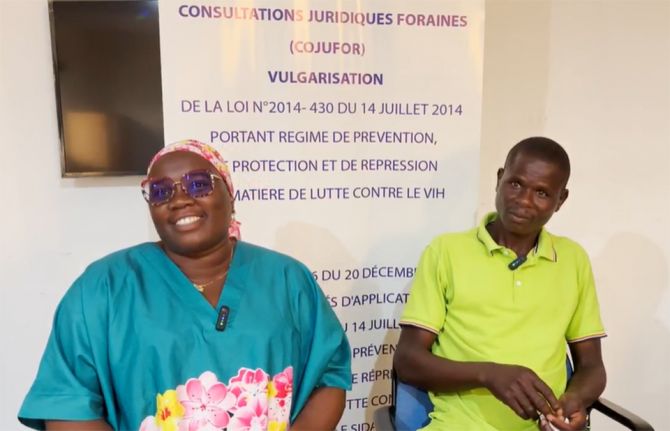
Feature Story
Côte d’Ivoire advances toward Universal Health Coverage—Leaving No One Behind
19 May 2025
19 May 2025 19 May 2025The government of Côte d’Ivoire is transforming access to health services, including HIV services, in its commitment to achieve Universal Health Coverage (UHC).
The government has made UHC registration mandatory and nearly 60% of the population is already enrolled, demonstrating the country’s political will to build a resilient and equitable health system.
A central priority of the Government’s UHC agenda—supported by the World Bank, the Global Fund and UNAIDS—is to ensure that all people living with HIV, estimated at over 400 000 people, are fully enrolled in the national health insurance scheme. Special attention is being given to identifying modalities through which the poorest and most vulnerable people living with HIV will benefit from free coverage under UHC.
In 2022, UNAIDS conducted an evaluation of Côte d’Ivoire’s social protection system through the lens of the HIV response. This work informed the 2024–2028 National Social Protection Strategy, which now explicitly recognizes people living with HIV as a priority vulnerable group.
“This is an urgent plea—I want all people living with HIV to have free access to the UHC card because many people simply cannot afford to contribute. I’m calling on the government to cover their premiums,” said Tinhidé Adéline, Community Counsellor.
Efforts are underway to integrate HIV-related services and products into the UHC benefits package. Over the past three years UNAIDS, in partnership with the Network of Organizations of People Living with HIV (RIP+), has mobilized communities and advocated with national authorities to ensure people living with HIV are enrolled in UHC, ensuring that stigma and exclusion do not stand in the way of health and dignity.
“UHC is a real opportunity for people living with HIV because being HIV-positive is often a barrier to accessing health insurance,” says Filbert Guéhi, Chair of the Board, RIP+.
UNAIDS, in collaboration with WHO, is also assisting RIP+ in developing a budgeted community-based strategy to sensitize and register people living with HIV in UHC to guarantee that services reach those most in need. This community-driven approach to UHC enrollment for people living with HIV represents a major step forward in ensuring equitable access to health care for vulnerable populations.
Advocacy continues to establish a sustainable national mechanism to automatically enroll the most vulnerable people living with HIV in the non-contributory Health Insurance Scheme. A two-year pilot initiative on this is currently being supported by The Global Fund and The World Bank. This is a vital step toward ensuring no one is left behind, and toward harnessing UHC as a powerful lever in the fight to end AIDS by 2030.
Ensuring full inclusion of people living with HIV in the roll out of UHC was a commitment made by the government at the annual session of the National AIDS Council in 2023 chaired by the Vice-President of Côte d’Ivoire Tiémoko Koné and in presence of the First Lady Madame Dominique Ouattara. This initiative is a cornerstone of the Government’s long-term strategy to transition towards a sustainable, nationally owned HIV response to end AIDS as a public health threat by 2030.



